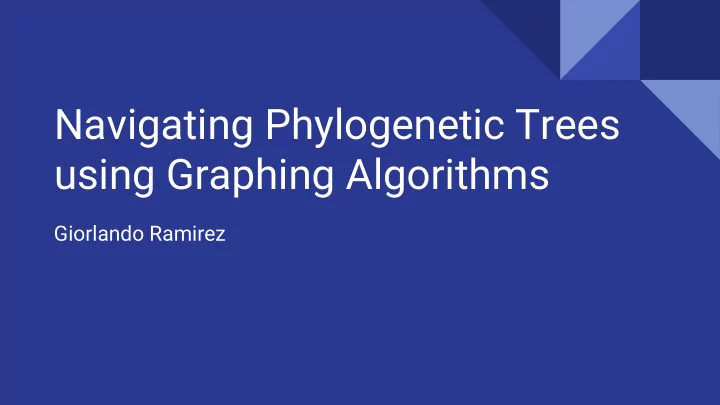

Navigating Phylogenetic Trees using Graphing Algorithms Giorlando Ramirez
So...What’s the problem? -Phylogenetic trees can be huge, and calculating the distance in between species that are far away from each other in the tree can be difficult. <<- Big tree -This makes it difficult to find the shortest evolutionary distance(branch lengths) in between two species.
The solution to our problems? Breadth-first Search* Input: A Graph, a starting node in the Graph and goal node in the Graph. Output: Goal node. The shortest path back to starting node. *Making this function was hard.
So how does it work? -Visits neighbor nodes first before moving on to next level neighbors. As opposed to simply going the full depth(Depth first search). Here’s a nice gif to demonstrate exactly how it works: Gif source: https://en.wikipedia.org/wiki/Breadth-first_search
Data and Formatting -Works on data sets presented in the Newick format: Example: (Bovine:0.69395,(Gibbon:0.36079,(Orangutan:0.33636,(Gorilla:0.17147,(Chimp:0.1 9268, Human:0.11927):0.08386):0.06124):0.15057):0.54939,Mouse:1.21460):0.10 -Format on Python: Dataset1 = [['Chimp','A'],['Human','A']] Dataset1Dictionary = {('Chimp','A'):0.19268,('Human','A'):0.11927}
Results -The program can: -Trace the path taken between species. -Calculate number of edges. -Find the distance between species. -Good news: Program works on practice Data Set. And creates nice graph in GraphSpace. -Bad news: Wasn’t able to find a Newick Tree format database to download loads of data directly from. So Data-wise the program is very limited. And I had to build all of the test graphs and corresponding dictionaries.
Now, the program. I will now present my extremely underwhelming somewhat interactive program.
Recommend
More recommend